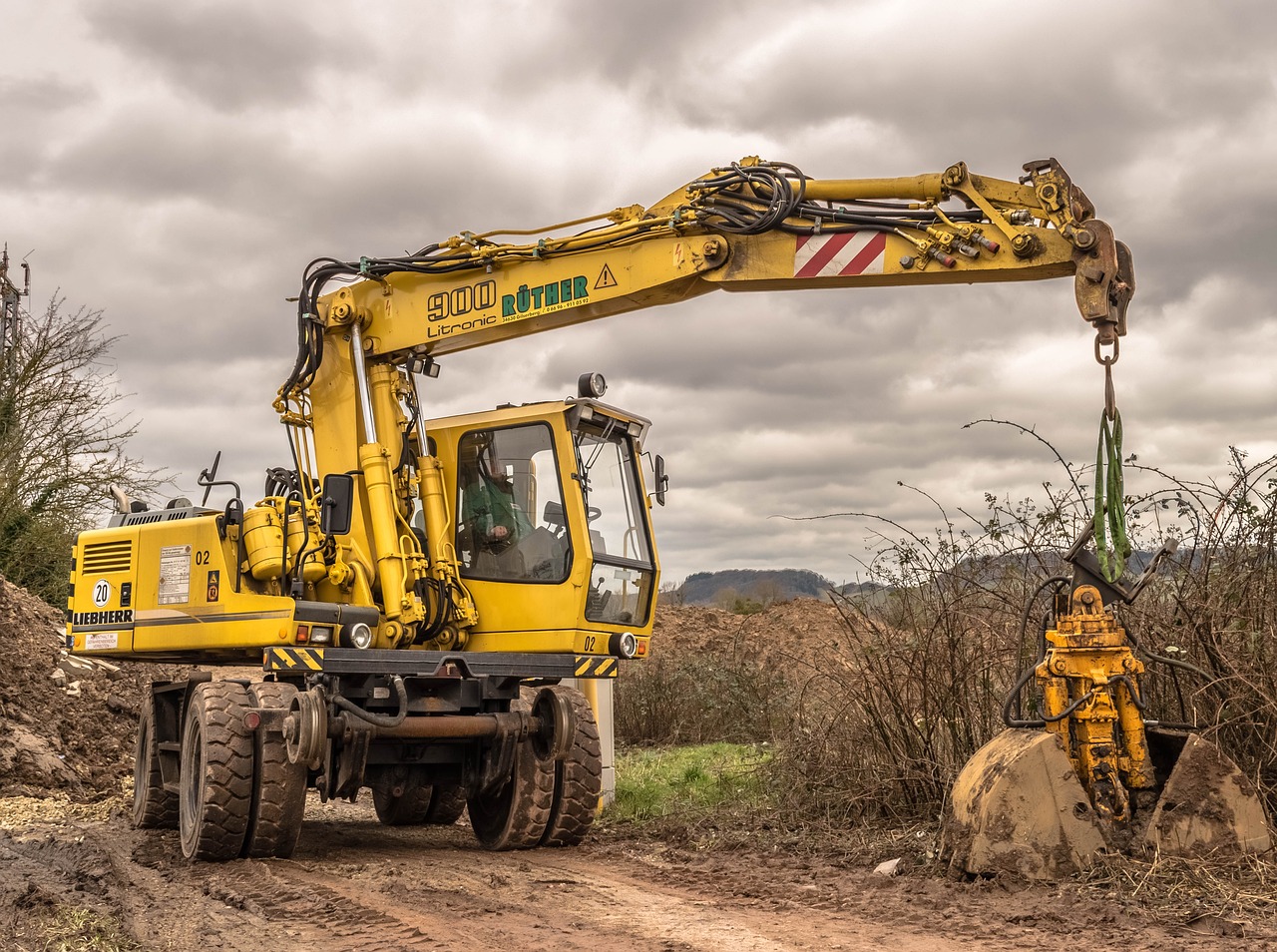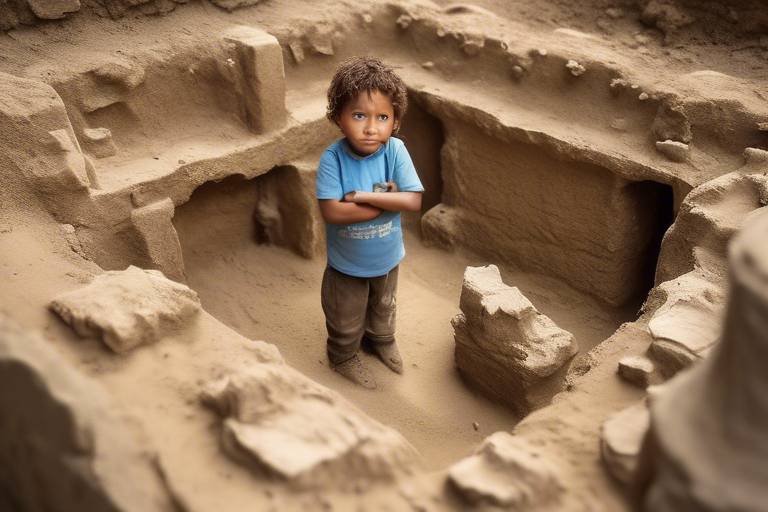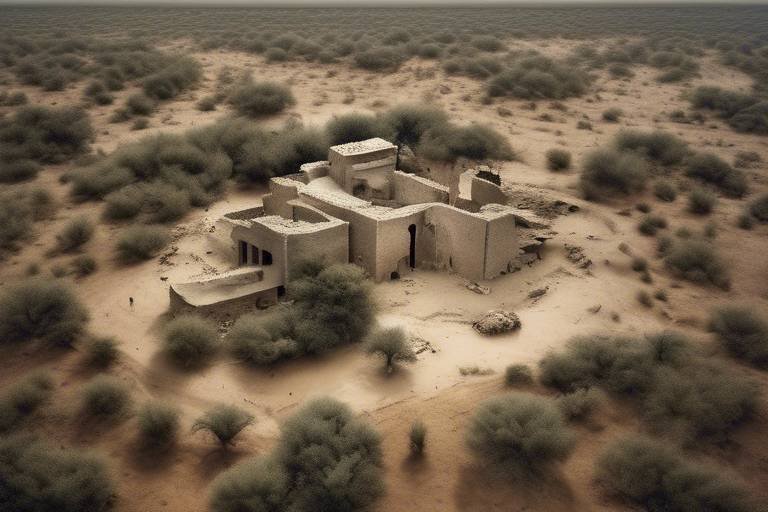The Importance of Heritage Sites for Education
Heritage sites hold a significant role in education, acting as living textbooks that bring history, culture, and art to life for students. These sites offer a unique and immersive learning experience that goes beyond traditional classroom settings, allowing students to engage with the past in a hands-on and meaningful way.

Preservation of History
Heritage sites serve as time capsules that encapsulate the essence of bygone eras, allowing students to step into the shoes of those who came before. These sites are not merely static structures but living monuments that breathe life into history, offering a glimpse into the past that textbooks cannot replicate. Imagine walking through the ancient ruins of a civilization or standing in a historic battlefield where pivotal events unfolded. The experience is akin to time travel, where history unfolds before your eyes, making it more than just a subject in a book.

Cultural Diversity
Cultural diversity is like a vibrant mosaic of colors, each piece unique and essential to the beauty of the whole picture. When students explore heritage sites that embody different cultures, they are not just observing artifacts and monuments; they are immersing themselves in the stories, traditions, and values of diverse communities. It's a journey that goes beyond textbooks and lectures, allowing students to witness firsthand the richness of human expression through art, music, language, and rituals.
Imagine walking through the ancient ruins of Machu Picchu, feeling the echoes of the Inca civilization whispering in the wind, or standing in awe before the intricate carvings of Angkor Wat, marveling at the architectural brilliance of the Khmer empire. These experiences ignite a sense of wonder and curiosity, encouraging students to appreciate the ingenuity and creativity of different cultures throughout history.
Moreover, cultural diversity teaches students to embrace differences and find beauty in the unfamiliar. It challenges preconceived notions and stereotypes, fostering a spirit of openness and acceptance. By engaging with diverse heritage sites, students learn to navigate the complexities of a globalized world with empathy and respect, paving the way for a more inclusive and harmonious society.

Art and Architecture
Exploring heritage sites exposes students to various forms of art and architecture, providing insights into the aesthetics, craftsmanship, and societal values of different time periods. When students walk through ancient ruins or admire intricate frescoes in a historic cathedral, they are not just observing but immersing themselves in the artistry of the past. This hands-on experience allows them to appreciate the skill and creativity of artisans who have shaped the cultural landscape over centuries.
Moreover, studying architecture at heritage sites offers a unique perspective on how societies have expressed their values and beliefs through design. From the grandeur of ancient temples to the intricate details of Gothic cathedrals, each architectural style tells a story of the people and the era in which it was built. By analyzing the structural elements and decorative motifs, students can decipher the cultural significance embedded in the buildings they explore.

Hands-On Learning
Exploring how heritage sites play a crucial role in education by providing hands-on learning experiences, connecting students with history, culture, and art, fostering a sense of pride in one's heritage, and promoting understanding and respect for diverse cultures.
Hands-on learning at heritage sites is a transformative experience for students. It goes beyond textbooks and lectures, allowing them to immerse themselves in history, culture, and art. By touching, feeling, and seeing artifacts and structures firsthand, students develop a deeper understanding and appreciation for the subject matter.
Imagine walking through the ruins of an ancient civilization, running your fingers over weathered stones that have stood the test of time. The tactile experience of exploring heritage sites sparks curiosity and critical thinking, encouraging students to ask questions and seek answers through observation and analysis.
Moreover, hands-on learning fosters creativity by inspiring students to interpret history and culture in their unique ways. It encourages them to think outside the box, connecting the past with the present and envisioning the future through the lens of heritage and tradition.
Through interactive activities such as archaeological digs, art workshops, and historical reenactments, students not only learn about the past but also develop practical skills and empathy for the people who lived in different eras. This holistic approach to education cultivates well-rounded individuals with a deep appreciation for heritage and a thirst for knowledge.
Heritage sites serve as living classrooms where history comes alive, and the lessons learned are etched in the minds and hearts of students forever. By engaging in hands-on learning experiences, students embark on a journey of discovery, self-reflection, and growth, enriching their educational experience in ways that traditional teaching methods cannot replicate.

Local and Global Connections
Heritage sites serve as bridges that connect students not only to their local roots but also to a broader global context, emphasizing the interwoven nature of cultures and histories across the world. As students explore these sites, they begin to grasp the intricate web of connections that link societies and civilizations, fostering a sense of global citizenship and interconnectedness.

Environmental Awareness
Heritage sites not only serve as windows to the past but also as gateways to environmental awareness. Many of these sites are nestled in natural landscapes, offering students a firsthand experience of the beauty and importance of our environment. By exploring these sites, students can develop a deep appreciation for the natural world and understand the significance of conservation efforts.

Social Impact
Visiting heritage sites goes beyond mere exploration of historical artifacts; it has a profound on students and society as a whole. These sites serve as platforms for critical discussions on social issues, equity, and human rights, prompting students to reflect on the challenges faced by past and present societies.
By delving into the history and narratives preserved at heritage sites, students are encouraged to contemplate the struggles and triumphs of different communities. This engagement fosters a sense of empathy and understanding towards diverse cultural backgrounds, nurturing a more compassionate and inclusive society.
Moreover, heritage sites often shed light on the injustices and inequalities prevalent in history, sparking conversations about social justice and the importance of equity in today's world. Students are challenged to confront uncomfortable truths and consider how past events continue to shape contemporary social dynamics.
Through these interactions with heritage sites, students develop a deeper appreciation for the complexities of human experiences and the interconnectedness of global societies. This awareness cultivates a sense of responsibility towards promoting social harmony and advocating for positive change in their communities.

Empathy and Respect
Empathy and respect are two fundamental values that are nurtured through the exploration of diverse heritage sites. When students engage with different cultures, traditions, and perspectives, they develop a deeper understanding of the world around them. This understanding cultivates empathy, allowing students to put themselves in the shoes of others and appreciate the challenges and triumphs experienced by different communities.
Moreover, visiting heritage sites instills a sense of respect for the histories and legacies of various cultures. By witnessing the artifacts, monuments, and stories preserved at these sites, students learn to value the contributions of different societies throughout history. This respect translates into a broader appreciation for the richness and complexity of human civilization.
Through empathy and respect, students not only become more tolerant and inclusive individuals but also contribute to the creation of a more harmonious society. By recognizing and celebrating the diversity of heritage sites, students actively participate in the preservation and promotion of cultural heritage, ensuring that future generations can continue to learn from the past.
Frequently Asked Questions
- What are heritage sites?
Heritage sites are places of cultural, historical, or natural significance that are preserved for future generations. They can include ancient ruins, historic buildings, natural landscapes, and more.
- Why are heritage sites important for education?
Heritage sites offer hands-on learning experiences that connect students with history, culture, and art in a tangible way. They foster a sense of pride in one's heritage, promote understanding of diverse cultures, and stimulate critical thinking and creativity.
- How do heritage sites promote cultural diversity?
Heritage sites showcase a variety of cultures and traditions, allowing students to appreciate and celebrate diversity. By immersing students in different cultural experiences, heritage sites promote empathy, respect, and tolerance for diverse perspectives.
- What can students learn from visiting heritage sites?
Students can learn about history, art, architecture, social issues, environmental conservation, and more by visiting heritage sites. These visits provide real-world context to classroom learning and encourage students to become global citizens.



















